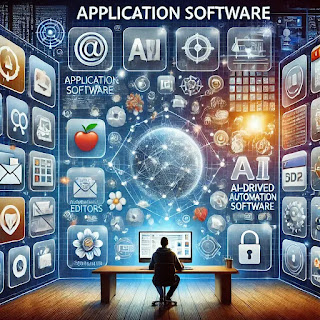How Computers Operate: Understanding the Basics
Computers are integral to modern life, powering everything from smartphones to space exploration. But how do these machines function? This blog post delves into the inner workings of computers, explaining their key components and how they process information.
The Fundamental Components of a Computer
Computers consist of various hardware and software elements that work together to perform tasks:
1. Central Processing Unit (CPU)
Often referred to as the "brain" of the computer, the CPU executes instructions from programs and performs calculations.
Modern CPUs contain multiple cores, allowing for simultaneous processing of tasks.
2. Memory and Storage
RAM (Random Access Memory): A temporary storage area that holds data actively being used by the CPU for quick access.
Storage Drives: Hard drives (HDDs) and solid-state drives (SSDs) store permanent data and applications.
3. Input and Output Devices
Input Devices: Keyboards, mice, touchscreens, and microphones allow users to interact with the computer.
Output Devices: Monitors, printers, and speakers display and present processed data to users.
4. Motherboard and Power Supply
Motherboard: The central circuit board that connects all components, enabling communication between them.
Power Supply Unit (PSU): Converts electrical energy into usable power for computer components.
How Computers Process Information
Computers follow a cycle to execute tasks efficiently:
Input: Users provide data through input devices.
Processing: The CPU interprets and executes instructions.
Storage: Data is stored temporarily in RAM or permanently in storage drives.
Output: The processed data is displayed or transmitted via output devices.
Feedback: The cycle repeats based on user interaction or automated processes.
Operating Systems and Software
A computer’s functionality is largely dependent on its operating system (OS) and software applications:
Operating Systems: Windows, macOS, Linux, and Android manage hardware and software resources.
Software Applications: Programs like web browsers, word processors, and games enable specific functionalities.
Networking and the Internet
Modern computers are connected through networks to share information:
Local Area Networks (LANs): Enable communication between computers in close proximity.
Internet Connectivity: Facilitates global communication, data sharing, and cloud computing services.
The Future of Computer Operations
As technology advances, computers are becoming more efficient and intelligent:
Quantum Computing: Offers potential breakthroughs in data processing speed.
AI Integration: Enhances automation, decision-making, and problem-solving capabilities.
Edge Computing: Processes data closer to the source, reducing latency and improving performance.
Computers operate through a combination of hardware, software, and networking, enabling them to perform complex tasks with efficiency. As innovation continues, the way computers function will evolve, bringing about faster, smarter, and more powerful computing experiences.
What aspects of computer operations interest you the most? Share your thoughts in the comments below!
References
Patterson, D. A., & Hennessy, J. L. (2017). Computer Organization and Design: The Hardware/Software Interface. Morgan Kaufmann.
Tanenbaum, A. S. (2016). Structured Computer Organization. Pearson.
Stallings, W. (2020). Computer Organization and Architecture. Pearson.
Andrews, J. (2022). A+ Guide to IT Technical Support. Cengage Learning.
IBM. (2023). How Computers Work: A Guide to Hardware and Software. Retrieved from https://www.ibm.com
Intel. (2023). Fundamentals of Processors and Computing Technology. Retrieved from https://www.intel.com



Comments
Post a Comment